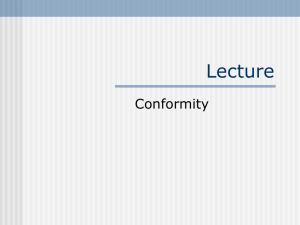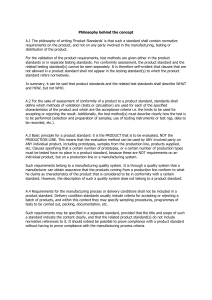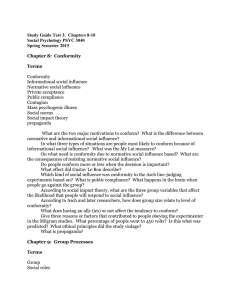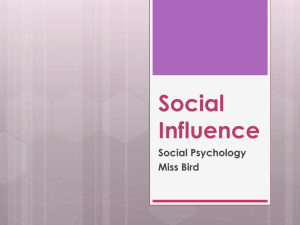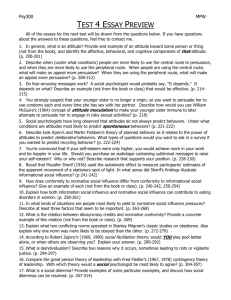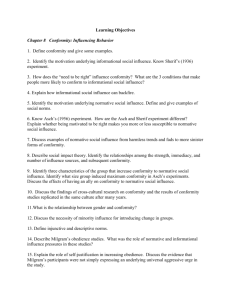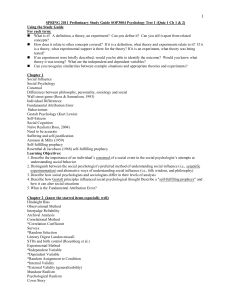EXPLANATIONS OF WHY PEOPLE CONFORM
advertisement
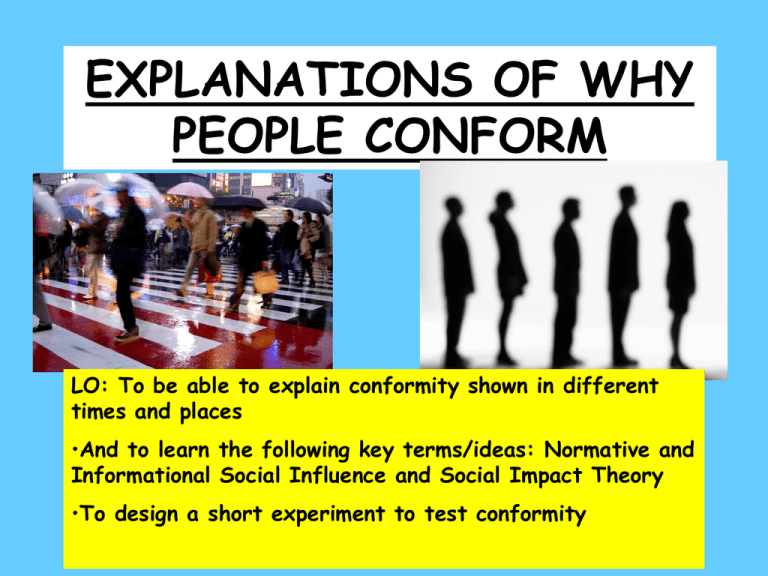
EXPLANATIONS OF WHY PEOPLE CONFORM LO: To be able to explain conformity shown in different times and places •And to learn the following key terms/ideas: Normative and Informational Social Influence and Social Impact Theory •To design a short experiment to test conformity Deutsch & Gerard (55) -Dual Process Model of Conformity Informational social influence When an individual conforms because of superior knowledge or judgement of others. They genuinely believe others to be right. Change in private opinion (internalisation) Most likely when situation is ambiguous, it is a crisis or we believe others are experts. Normative social influence Occurs because he or she wants to be liked by others and wants to avoid being rejected. This is because we are a social species and need companionship and fear rejection. Affects only public opinions (compliance) Most likely when majority make it difficult to deviate and exert pressure to conform. Evaluation of Normative and Informational Social Influence + They identified two key processes underlying conformity - Approach is designed to apply to majority influence - It is difficult to distinguish whether effects are due to normative, informational or a combination -It depends on the situation the person finds themselves in and his/ her personal characteristics -Informational has been less extensively studied than normative, but there is some evidence that exposure to other people’s beliefs has an important influence on social stereotypes. + Practical applications of normative e.g. to bullying. Garandeau & Cillessen (2006) have shown how groups with low quality interpersonal friendships can be manipulated by a skilful bully, victimisation becomes a common goal and group members are pressured to comply. SOCIAL IMPACT THEORY LATANE & WOLF (1981) proposed this to explain why we conform in some situations and not others. 3 factors affect an individual’s behaviour: 1. NUMBER – people present the more influence they have. However, the rate of impact grows less with each new person added. 2. STRENGTH –the more important the people are to the individual the greater the influence. The more status and expertise then the stronger the influence. 3. IMMEDIACY – The closer (physically and psychologically) you are to the influencer, the more effect their message has. • In some situations, this would lead to majority influence (e.g. where strength in terms of numbers is high and status and immediacy is low). • In other situations, a minority influence could occur (e.g. where strength in numbers is low, but the person saying the message has high status and consistency). EVALUATION + This theory is very useful in explaining both majority and minority influence + Seikides & Jackson (1990) found high strength and highimmediacy sources exerted more impact than low strength and immediacy sources. + Crutchfield showed immediacy influenced conformity + Asch showed that as the number in the group went up so did conformity
